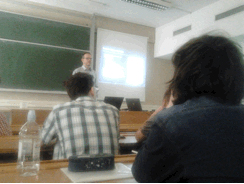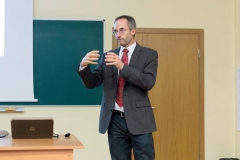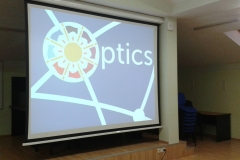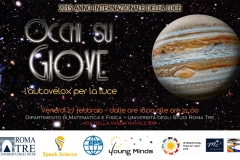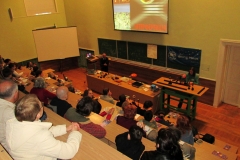 ICTP Young Minds section together with Ivan Franko National University of Lviv held the “Lviv Days of Light” in May 16-17, 2015. The event consisted of three parts: lecturing part, experimental part and entertaining part. The role of light in art, the nature of light and the application of optics in everyday life were discussed during the presentations. Interesting light phenomena, namely: interference, diffraction, polarization, luminescence etc. – were demonstrated later. Finally, everybody had an opportunity to draw a picture using luminous paints and to observe the beautiful effect afterwards under the UV light.
ICTP Young Minds section together with Ivan Franko National University of Lviv held the “Lviv Days of Light” in May 16-17, 2015. The event consisted of three parts: lecturing part, experimental part and entertaining part. The role of light in art, the nature of light and the application of optics in everyday life were discussed during the presentations. Interesting light phenomena, namely: interference, diffraction, polarization, luminescence etc. – were demonstrated later. Finally, everybody had an opportunity to draw a picture using luminous paints and to observe the beautiful effect afterwards under the UV light.
The program of the activities was the following:
16 May:
- Popular scientific talk about the role of light in art, given by Victoria Boyarko-Dolzhenko from the Lviv Academy of Art;
- Everybody (children of all ages!) had an opportunity to draw a picture using the luminous paints;
17 May:
- Popular lecture about the role of light and its different sources was provided by Vitaly Vistovskyy from the Department of Experimental Physics (Ivan Franko National University of Lviv);
- Fascinating optical experiments demonstrating the physical properties of light were provided by Igor Pashuk and Andrij Zhyshkovych from the Department of Experimental Physics (Ivan Franko National University of Lviv);
- Exhibition of luminous drawings including a number of paintings created by lviv artist Oksana Romanova.
[nggallery id=7]

